There are eleven different use categories for the counter 本!
Of all the counters that exist in the Japanese language, one of the most common is 本 (ほん/hon). By itself, 本 means "book" or "origin," but this fact, unfortunately, reveals nothing about its counting function. 本 is not used to count books (or superhero origin stories!), but instead for counting pencils, neckties, teeth, tires, and home runs. As you can see, none of these have much (or anything) to do with books!
According to the How to Count Dictionary (数え方の辞典), there are eleven different use categories for the counter 本! We've simplified things a bit, done some combining, and removed idiomatic usage, all of which will hopefully result in a lesson you can apply easily. We've also included explanations for how to use each counter category, along with example sentences to give you some context. By the time you're done, you'll be much more skilled at using the 本 counter!
First, though, please take a look at the following chart to see how the reading of 本 changes depending on the number. Or, better yet, familiarize yourself with the general rules around reading changes in our big Japanese Counters article. As they say, teach a man to fish and he'll read Japanese counters forever! 😜
- Pronunciation of Japanese Counter 本
- "Stick-Shaped" or "Thin and Long" Things
- The Number of (Connected) Phone Calls
- The Number of Runs for a Train or Bus
- (Good) Plays In Sports
- Things That Have a Start and End
- Number of Products (Usually Software)
- Prize Numbers
- This Article is Just 一本 of Many
Prerequisite: If you're completely new to Japanese counters, we recommend you learn the basics first. Make sure you know how to read hiragana and katakana. We'll mention the "kango/wago/gairaigo counting method," and you can learn about all three of these Japanese numbering systems in our Counting in Japanese article. Knowing the kanji for numbers will help, too. In our example sentences and explanations, we equally use Arabic numerals (1, 2, 3) and Japanese kanji (一, 二, 三), since both are quite common in Japanese.
Pronunciation of Japanese Counter 本
As you know, 本 is read as ほん (hon). But Japanese pronunciation isn't so simple: sometimes it will change to ぼん or ぽん. This table covers all the reading changes for ほん as well as those for the numbers that precede it.
| Numeral | Japanese | Reading 1 | |
|---|---|---|---|
| 1 | 一本 | いっぽん | |
| 2 | 二本 | にほん | |
| 3 | 三本 | さんぼん | |
| 4 | 四本 | よんほん | |
| 5 | 五本 | ごほん | |
| 6 | 六本 | ろっぽん | |
| 7 | 七本 | ななほん (しちほん) | |
| 8 | 八本 | はちほん/はっぽん | |
| 9 | 九本 | きゅうほん | |
| 10 | 十本 | じゅっぽん (じっぽん) | |
| 11 | 十一本 | じゅういっぽん | |
| 12 | 十二本 | じゅうにほん | |
| 100 | 百本 | ひゃっぽん/ひゃくほん | |
| 1,000 | 千本 | せんぼん | |
| 10,000 | 一万本 | いちまんぼん | |
| how many | 何本 | なんぼん (なんほん) (なんぽん) |
When used as a counter, 本 does a good job of following general reading rules. And thank goodness! You'll need your full brain power to learn all its use categories. There are a lot of them!
"Stick-Shaped" or "Thin and Long" Things
The first big category covers the most common use case. And yet "stick-shaped" or "thin and long" is pretty vague. Let's start much wider and get narrower as we go. That way, you'll be able to count as many things as possible using 本 before you have to work with more-confusing stuff.
Ratio is 1:2 or Longer

You use 本 to count sticks of chalk, pencils, pens, tree branches, strings, laces, cords, neckties, cigarettes, and umbrellas.
The idea of a "stick-shaped thin and long thing" differs from person to person, so let's start instead with a useful guiding principle: things that have a 1:2 (or longer) ratio are probably counted using 本. They don't have to be perfect sticks, cylinders, or rectangles. As long as the object is more than twice as long as it is wide and somewhat stick/cylinder-shaped, it's likely to be accepted into the 本-counter fold. If it's shorter than a 1:2 ratio, you'd probably count it using the counter 個 (こ), or with a specific counter made for that thing.
For example, you use 本 to count sticks of chalk, pencils, pens, tree branches, strings, laces, cords, neckties, cigarettes, and umbrellas. These are all long and skinny, though the ways in which they're long and skinny vary quite a bit.
- 赤い傘は一本しか持っていません。
- I only have one red umbrella.
- この1ダースの箱には、鉛筆が12本入っています。
- There are twelve pencils in this one dozen box.
You will find some flexibility here. What about a cigarette butt, for example? If it's really short, we'd suggest using the counter 個. If it's long, 本 is probably your best bet. Again, remember that 1:2 ratio we talked about.

Plenty of items that don't seem like they'd fit in this category actually do. Even though they're round or ring-shaped, wristwatches and tires are counted with 本. That's because when they're unfurled, they're long and skinny: take off your watch, lay it down, and you'll see what I mean. The same is true for bracelets and necklaces—unless they cannot be undone, in which case they get counted with 個. How finicky!
One important point here is that 本 is usually used with inanimate objects. A whole tuna at the fish market, for example, when it's dead (or unable to move), gets counted using 本 because it's long, roughly cylindrical, and inanimate.
- スーパーでマグロを五本買ってきて。
- Can you go get five tunas from the grocery store?
And yet if the same tuna were alive and swimming in the ocean, we'd use the counter 匹, which applies to animals. Interesting, right?
There are many variations to the "inanimate" rule: trees, for example, and flowers, and other growing things—which have long stalks but are living organisms—get counted with 本 because they're immobile.
- うちの庭には木が三本生えています。
- There are three trees in our yard.
Humans beings are also animate, and longer than we are wide, yet we don't count ourselves using 本. We do, however, count spines, teeth, individual hairs, arms, legs, fingers, and blood vessels using 本.
- え、日本人は背骨が二本あるの?
- Wait, do Japanese people have two spines?
Speaking of blood vessels, other long lines of liquid get counted with 本 as well: rivers and waterways, to name just two.
Although most of these have made sense so far, there are some 本 objects we'd put in the "questionable" category. Eyeglasses, for example, are counted with 本. Maybe it's because glasses are made up of several long skinny parts, or maybe it's because telescopes came first and glasses were thought of as small, wearable telescopes. Whatever the reason, you'll find exceptions like this everywhere, and you'll just have to remember them when they arise.
Thin and Long Containers

Most long cylindrical containers get counted with 本 as well. Soda cans, plastic bottles, beer bottles, fire extinguishers, and cans of hairspray make the cut.
- 今日はコーラを六本も飲んでしまった。
- I drank six cans of cola today!
- ここにビール瓶を一本隠しておいたんだ。
- I was hiding a beer bottle here.
- ペットボトルの水24本で498円だって。
- It says it's only ¥498 for twenty-four bottles of water.
The correct counter to use for Mason jars and other jam and pickling jars depends on the person. Some use 本, though I think the jars aren't long and thin enough (I'm kind of a 本 stickler), so I would suggest つ, 個, or the counter for glass jars and bottles, 瓶 (びん). Other even-shorter containers, like tuna cans, definitely aren't counted with 本. For these, your best option would be to use either the cans counter 缶 (かん) or either of the two general counters.
Yet Iida, one of the authors of 数え方の辞典, makes an interesting point: if the can has something solid in it—tuna, corn, beans, etc.—it will be counted with 缶 or 個. But if it contains a liquid or gaseous substance, you would use 本. Hmmm. Which means that even though the can itself might look the same from the outside, the contents inside can change the counter you use. Overall, using 缶 or 個 is probably the safest bet, and nobody will punish you for counting a can filled with juice using 個.
Thin and Long Buildings or Structures
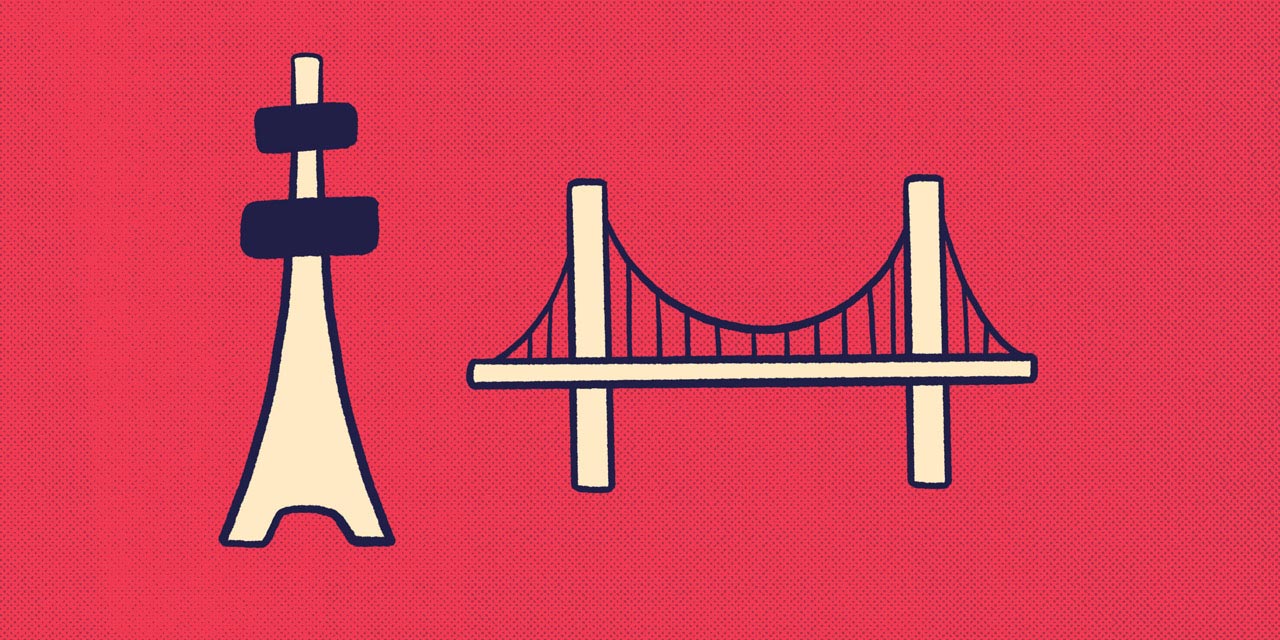
If a building is taller than it is wide (perhaps using our familiar 1:2-or-more ratio), you can be pretty sure it will be counted using 本. Think of a typical city skyscraper or similar urban tower, you're on the right track.
- 日本にトーフグタワーを1029本建てるのがコウイチの夢です。
- Koichi's dream is to build 1,029 Tofugu towers in Japan.
- 霧の向こうに、ぼんやりと三本の塔が見えた。
- I could vaguely see three towers through the fog.
What other "buildings" are thin and long? Turn your head to the side ninety degrees, and you'll have it: bridges and the like fit the bill. They too get counted with 本.
- 来年、ここに橋が一本架けられる予定だ。
- There is a plan to build a bridge here next year.
Thin and Long Spaces
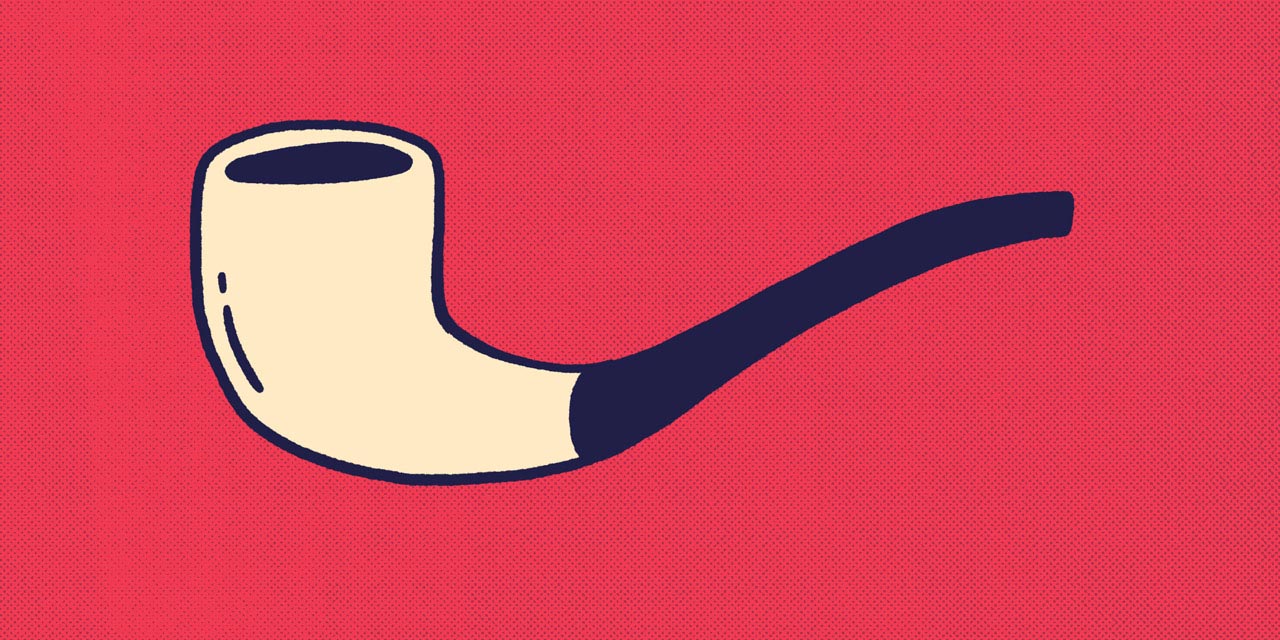
Tunnels, mines, wells, long holes, and so on are all counted with 本. I wonder how many pipes Mario has gone down… Oh! You know how to count that now!
- 青森県は、もう1本青函トンネルが必要だと主張している。
- Aomori Prefecture insists that they need another Seikan Tunnel.
- このオジサンは、今までになんと一万本の井戸を掘ったことがあるんだよ。
- This man has dug ten thousand wells so far.
Don't count potholes with 本, though, because they don't meet the 1:2 ratio, though maybe a really deep sinkhole would work.
Rolled-up Tapes
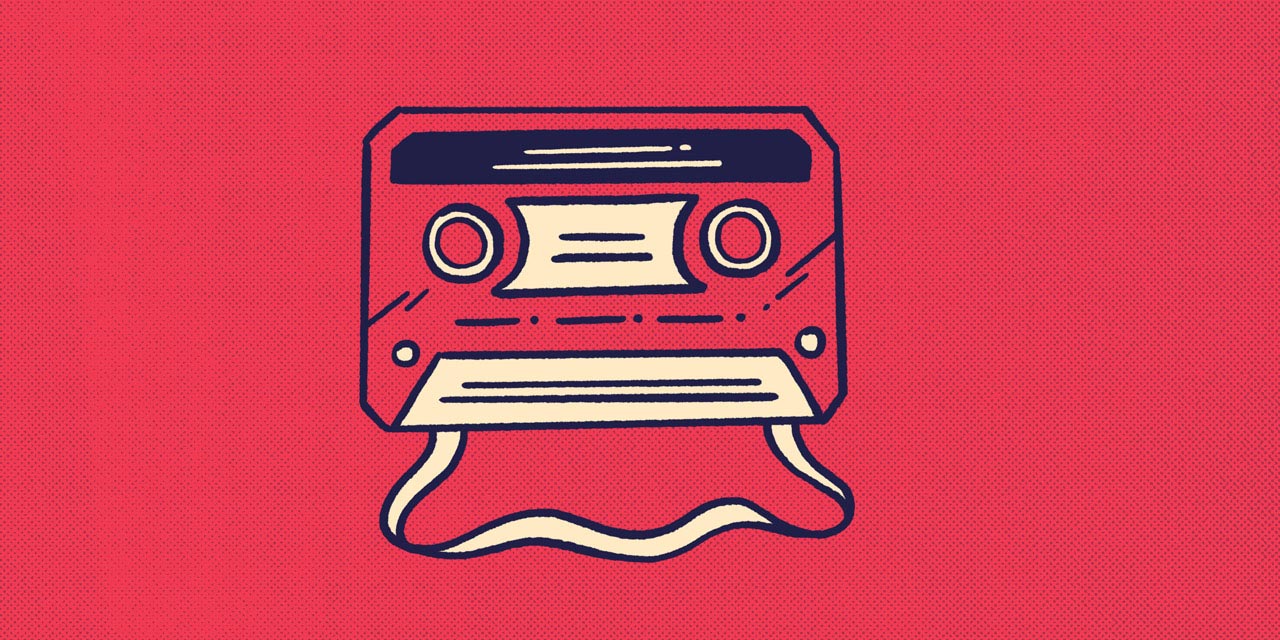
Certain kinds of (now older) magnetic tapes are counted using 本, too: cassette tapes, VHS tapes, and film. This is tape that doesn't decrease in length when you use it. The "tape" of film in your old camera, for example, doesn't disappear as you use it to take pictures. (If you're younger than twenty-five, you probably have no idea what I'm talking about.)
- 当時はカセットテープを千本以上持っていた。
- I had over a thousand cassette tapes at the time.
- フィルム一本現像するのに、いくらかかると思う?
- How much do you think it would cost to develop a roll of film?
Tape that gets "used up," on the other hand, does not officially get counted using 本, though plenty of people still count it this way.
Tape that gets "used up," on the other hand, does not officially get counted using 本, though plenty of people still count it this way. Duct tape, scotch tape, toilet paper, and other similar things should be counted using 個 or 巻 (まき)—the counter for "rolls of things." For toilet paper in particular, since the actual word for it in English is (トイレットペーパー), you can use the English counter as well: ロール.
You won't be surprised to hear that there are exceptions to this. Plastic wrap, tinfoil, and wax paper are usually counted with 本, not because they're long when you unravel them, but because they are long and cylindrical when rolled up. They get a pass on the "used up" rule because they meet the requirements of a different one.
- 抽選でサランラップ二本が当たったの。
- I won two rolls of plastic wrap from the raffle.
Wind and String Instruments

Wind instruments are often stick/cylinder-shaped and pipe-like, so it's understandable that you'd count them with 本. This includes flutes, clarinets, recorders, trumpets, trombones, saxophones, and more.
- あそこの倉庫にクラリネットが五本入っているはずだよ。
- There should be five clarinets in that storage room.
- あの人、リコーダーを二本、同時に吹くことができるんだって。
- Apparently, he can play two recorders at the same time.
- 楽器屋で、サックスを三本吹き比べてみた。
- I played three different saxes at the music store.
- この曲は、四本のクラリネットで演奏するために作られました。
- This song was made for four clarinets to play.
Stringed instruments also get counted using 本, though this feels odd. Still, think about it: the body shapes of guitars, basses, ukuleles, and other strummable instruments generally exceed the 2:1 ratio, plus they're covered with long, skinny strings. Perhaps it's not so odd after all.
- あなたのギターを一本使わせてもらえませんか?
- Could you let me use one of your guitars?
An exception: harps are counted using 台 (だい), the counter used (among other things) for large, bulky instruments. Think of it this way: if you have trouble lifting the instrument off the ground, it's likely to use the 台 counter for counting.
The Number of (Connected) Phone Calls

Not that long ago, telephones were connected by long, skinny cables. Even though phones connect wirelessly now, the concept remains.
Okay. We're done with the "long, skinny, cylinder-like objects," the most common and important 本 counter category to learn. Next we'll get into the weeds a bit with some unusual and more rare uses for 本. We think they're interesting and useful!
Here's the first unexpected category: you can use 本 to count the number of connected phone calls. It makes sense if you think about it: not that long ago, telephones were connected by long, skinny cables. Even though phones connect wirelessly now, the concept remains. If it helps, think of skinny, invisible data lines connecting each phone.
- そうは言っても、電話の一本ぐらいかけれたでしょうに!
- Having said that, you should have been able to make at least one call, right?
Similarly, sometimes people will use 本 to count answering machine messages and online messages (normally counted with 件/けん), as well as faxes and postcards (usually counted using 通/つう). If they do use 本, however, it's because they want to emphasize the connection between them. For example, a mother might say…
- うちの息子はメールの一本もよこさない。
- My son won't even send me a single message.
…which carries the nuance that she is feeling sad her son doesn't even try to stay in touch with her. The connection isn't there. Just like you do in your own native language, Japanese people probably don't think about all this subtlety; they just speak it naturally. This is the kind of detail you'll learn from practice, not from reading a textbook.
The Number of Runs for a Train or Bus
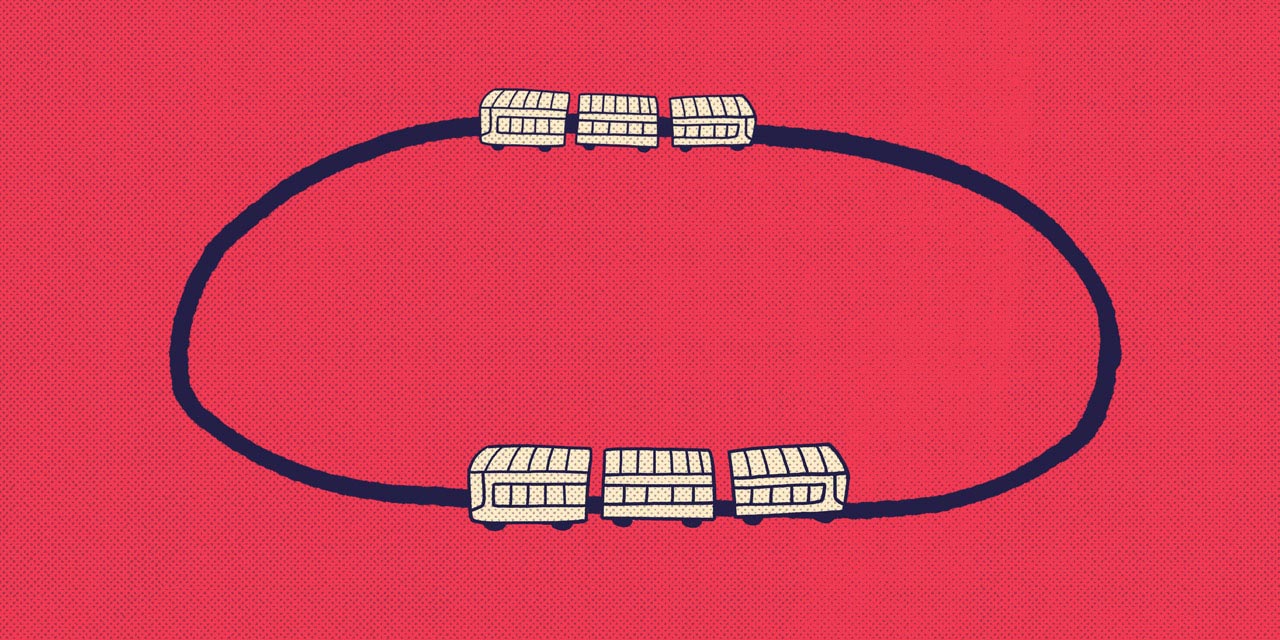
Maybe it's due to the shape of trains and buses, or maybe it's because trains and buses run on the same stretch of track or road over and over again, but counting the number of buses and trains uses 本. This is a little hard to explain in English, so here's an example:
- 混んでるから、一本後の電車に乗って行こう。
- It's packed, so let's take the next train.
- 田舎なので、このバス停には一日二本しかバスが来ない。
- Since this is the country, only two buses stop at this bus station each day.
Even though 本 here refers to each run of a transportation service, flights and ships are counted using 便 (びん). Why? Who knows?
(Good) Plays In Sports

In sports, some plays lead to something positive, like a point or a better position. These are counted with 本.
In martial arts such as judo or kendo, players learn the word ippon (一本). Ippon is a throw or strike that leads to a point—synonymous with "winning the point."
- コウイチが一本を取ったところ、ちゃんとビデオに撮った?
- Did you manage to videotape the part where Koichi got a point?
Unsurprisingly, in baseball, the number of home runs or hits is also counted with 本. This has expanded to include swings, both hits and misses.
- 今日はカブレラがホームランを三本も打った。
- Today, Cabrera hit three home runs!
- 毎日百本素振りをしてから学校へ行く。
- Every day I go to school after swinging my bat a hundred times.
In hockey, soccer, American football, or basketball, shooting or passing the ball is counted with 本. In tennis, ping-pong, and volleyball, serves, smashes, or spikes use 本, too. Even a failed hit gets counted with 本. For example:
- シュートを一本うったがはずれた。
- I shot, but missed (the goal).
In sports that involve multiple attempts, like the javelin or hammer throw, ski jump, high jump, or diving, 本 is used to count each attempt, though it gets combined with the ordinal number prefix 目 (め). The first try will be 一本目 (いっぽんめ), the second will be 二本目 (にほんめ), and so on.
Things That Have a Start and End
When something has both a start and an end, it is often counted using 本. Think of that start and end connected by a long string of times! Here's a list of things that fit this category.
Performances

本 is used to count the number of performances for events such as plays, lectures, talk shows, or other programs.
- 今日は舞台を三本もこなしたので、クタクタです。
- I acted in three plays today, so I'm exhausted.
- この後、講演の仕事が一本入っているんだ。
- I have one speaking engagement after this.
Pieces of Writing
Though used mostly by writers or editors, 本 counts the number of papers, books, articles, scripts, or manga. That's because these artists think of their writing in terms of tasks to be completed. And yet…
- 今週は何本ぐらい記事を書けそうですか?
- How many articles do you think you'll be able to write this week?
- その漫画家は、漫画の連載を四本掛け持ちしている。
- That manga artist has (works on) four manga series at the same time.
…readers don't count them this way. From a reader's perspective, books are counted using 冊 (さつ), stories with 話 (わ), articles with 記事 (きじ), 個, or つ, and papers using つ.
Assignments or Quota
If a person has a fixed number of things they must do to achieve a quota, 本 is used to count them. This works for everything from business assignments to school assignments.
- 今週末までに、レポートを五本書き上げなければならない。
- I have to write five essays by the end of this week.
Projects/Plans
A number of projects or plans usually gets counted with 本.
- トーフグには、とても重要なプロジェクトが1029本もある。
- There are 1,029 very important projects in Tofugu.
- 企画書を毎日一本書くようにしている。
- I try to write at least one project idea every day.
That being said, projects and plans also commonly get counted with つ.
Training Tasks
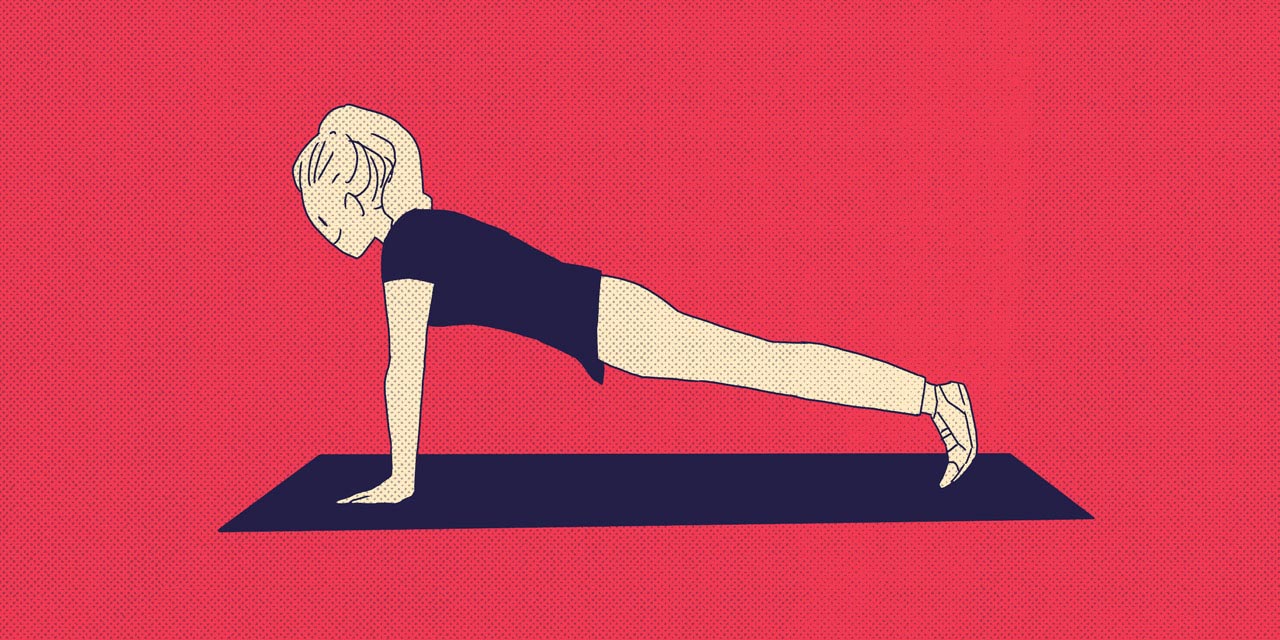
本 is also used to count during practice and training. You'll see it used in sports, acting, singing, illustration practice, and more. 本 tallies every push-up, every lap around the field, every sketch.
- 走り込み十本! ヨーイ、スタート!
- Ten dashes, ready, set, go!
- コウイチは起きたらまず腹筋百本をこなして、それからトイレに行く。
- When Koichi wakes up, first he does a hundred sit-ups, then goes to the bathroom.
- クロッキー40枚を1本にして、毎日1~2本は必ず練習するようにしている。
- I count forty pages of sketches as one set and assign myself one to two sets every day as must-do practice.
Movies
Movies, since they have a clear start and end, are counted with 本 too. A double feature is referred to as 二本立て映画.
- ドラえもんとドラゴンボールの二本立ての映画を見に行った。
- I went to see a double feature of the Doraemon and Dragon Ball movies.
- スピルバーグは、今までに約四十本もの映画を監督している。
- Spielberg has directed about forty films so far.
Media Segments
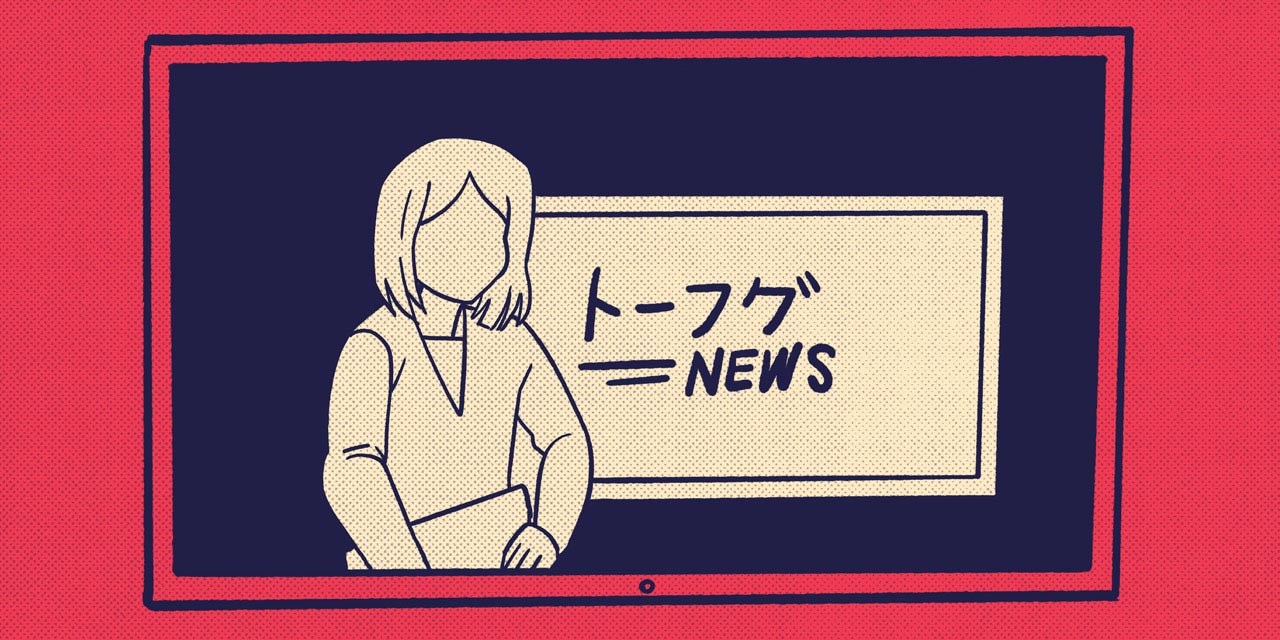
Similar to movies, 本 is used to count the number of programs on other media. It can be used by viewers, too, though it's more commonly done so by those making the content.
- あのYouTuberは、いつも一日で10本分のビデオを撮りだめするそうだ。
- I heard that YouTuber usually shoots ten videos worth of footage a single day.
- 今はテレビの仕事が一本と、ラジオの仕事が三本あります。
- I have one TV job and three radio jobs right now.
You can also count the number of news topics using 本. A news topic is just a tiny show, right? A short performance all its own.
- あのアナウンサーは、一分で三本のニュースを読み上げた。
- That newscaster read three news stories in one minute.
- ここにもう一本面白いコーナーが欲しいな。
- I want to add another interesting segment (a small part of a TV/radio show) here.
- あの芸人は、ネタを十本用意してきたが、一本もうけなかった。
- That comedian prepared ten jokes, but none of them landed.
Shorter than either a TV show or a news piece, advertisements are counted with 本 as well.
- トーフグのコウイチのCM一本のギャラ、知ってる?
- Do you know how much Koichi from Tofugu gets paid for one commercial?
A weird thing about advertisements: even those that are not on TV get counted as 本. Radio, newspaper, and magazine ads are all 本, too, though this kind of counting is usually only used by the folks working on them who consider them tasks with a start and finish.
Number of Products (Usually Software)
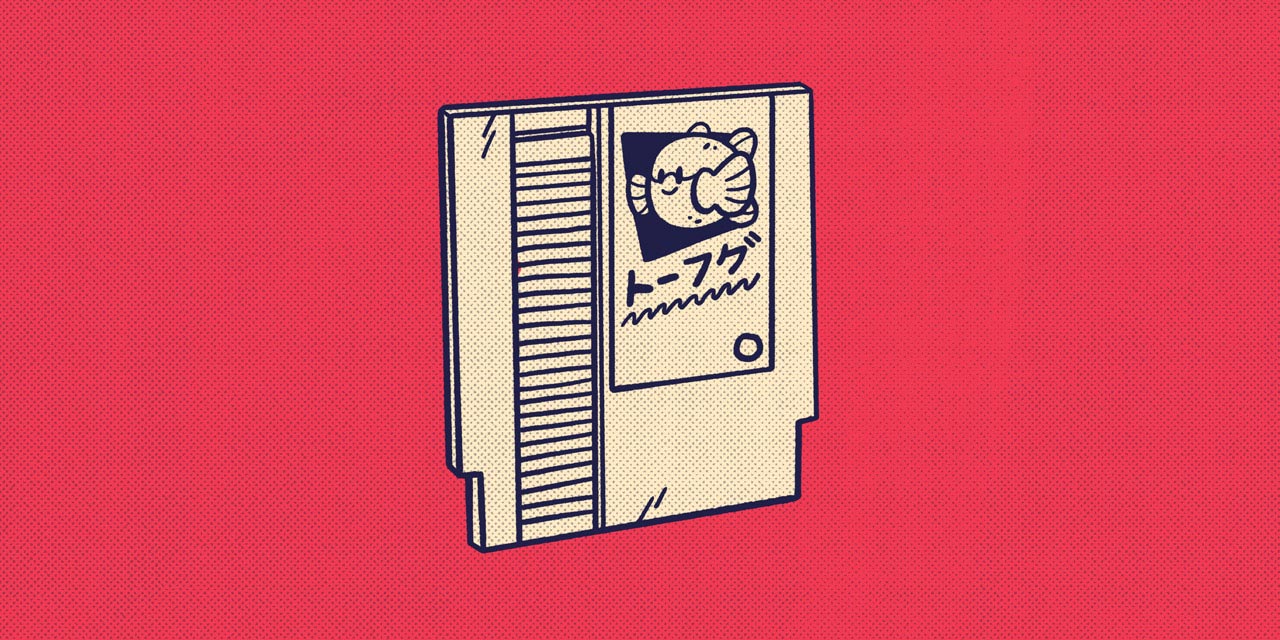
Some products get counted with 本, the most common being video games and software.
- 任天堂から新しいゲームソフトが三本同時に発売されるらしいよ。
- I heard Nintendo is going to release three new titles simultaneously.
These items were probably categorized into 本 because of cassette and VHS tapes, and because neither of them existed back when the 本 counter was first created.
Some products get counted with 本, the most common being video games and software.
Other kinds of products get counted with 本, too, though usually only by the sellers. Here's an example: recently I came across a website selling Wagyu steaks at a reasonable price. They said「30本限定」—the number of steaks one person could buy was limited to thirty. The seller used 本 to count their products. Their consumers, on the other hand, probably wouldn't.
Let's move on from these very specific instances. If you find yourself in one of them, you'll learn what you need quickly.
Prize Numbers
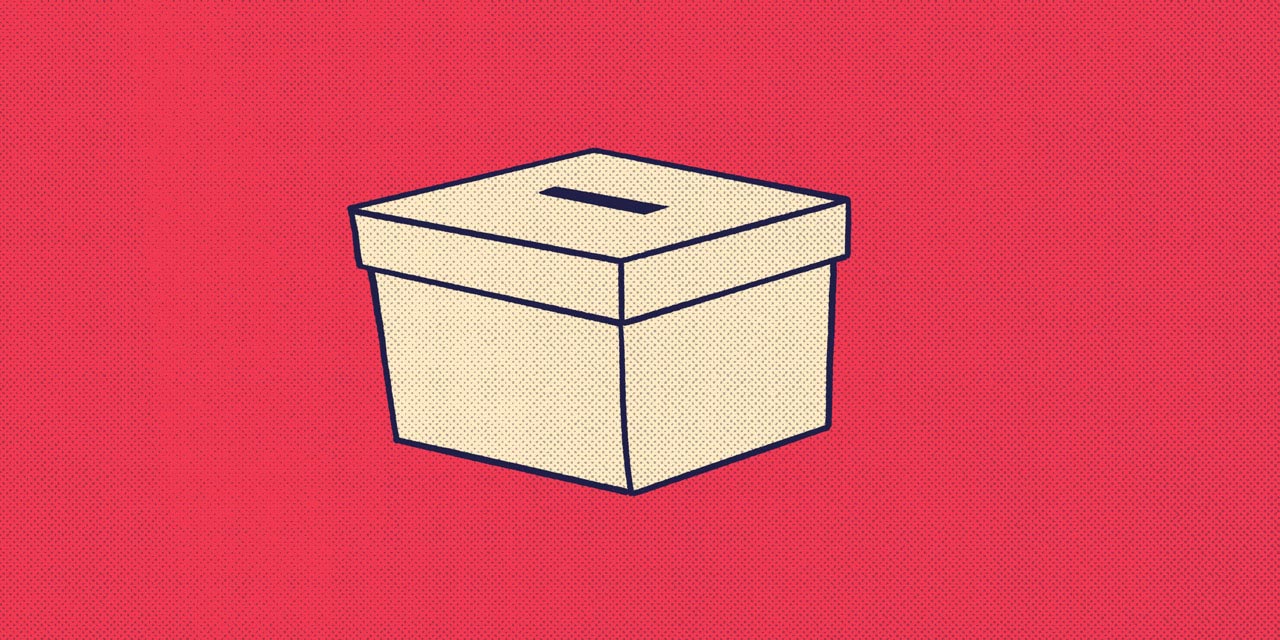
In drawings or contests, the number of prizes usually uses the counter 本. This comes from the fact that, back in the day, lucky winners were chosen by drawing long, thin pieces of paper out of a hat or box. Pretty cool.
- 一等は一本、二等は三本、三等は四十本ありますよ。
- There is one first prize, three second prizes, and forty third prizes.
This Article is Just 一本 of Many
You learned all about the Japanese counter 本! Nice going! Although there was a lot here, the most important category to learn is the first one: long and skinny sticks or cylinders. If you can retain the basics of that section, you'll be good in 99% of 本's use cases. The rest are really just a bonus.
That said, you'll find many other counters out there, and they're all almost as interesting as this one. If you haven't yet, check out some of our other counters articles, like 台, 枚, and 匹. You can find all the counters we've ever written about inside our big Japanese Counters study list—plus a whole lot more!
-
Cells with multiple entries divided by a
/indicate multiple pronunciations that are equally common. Cells with entries in parentheses indicate that the parenthesized word is an uncommon or archaic pronunciation. ↩
